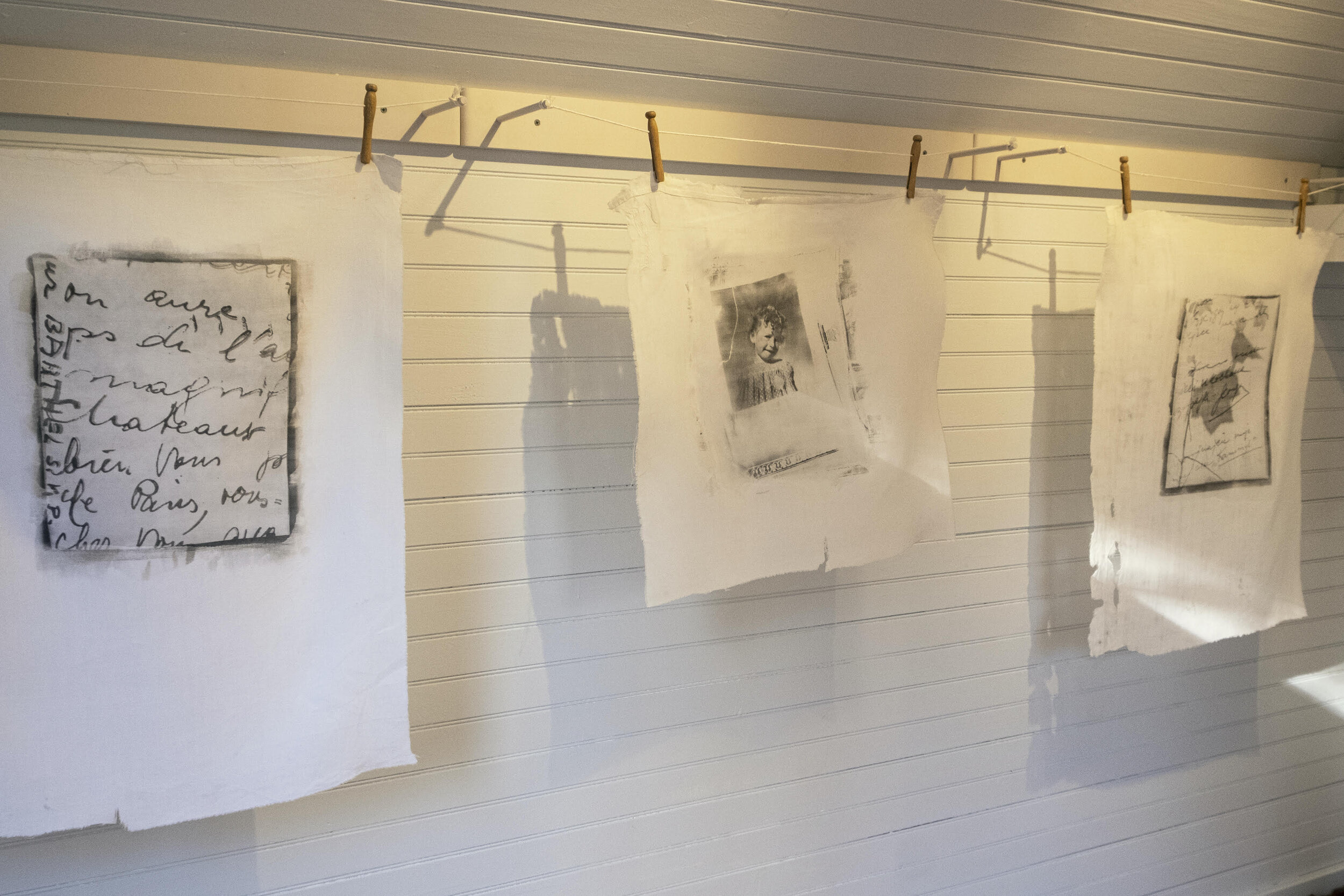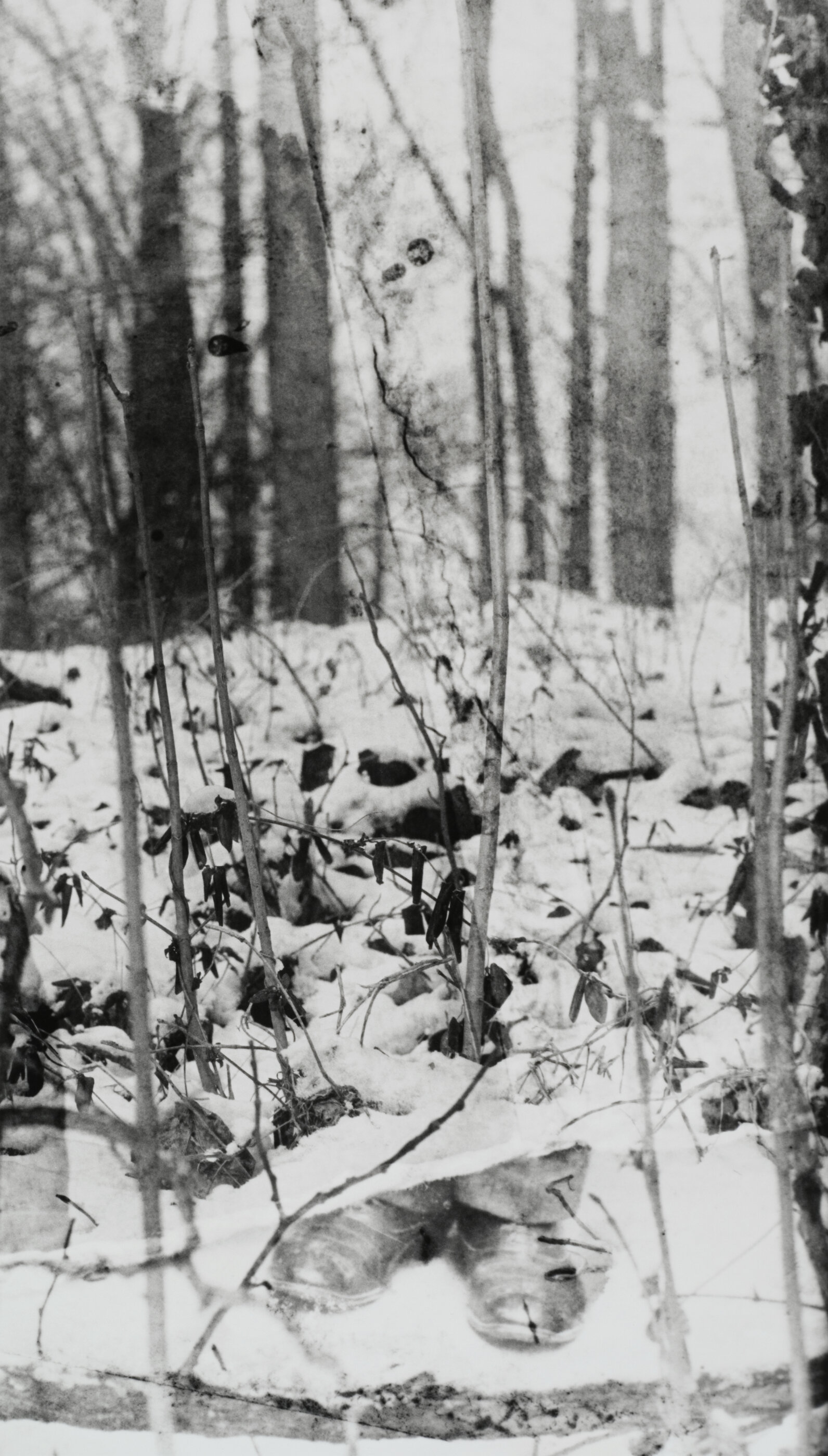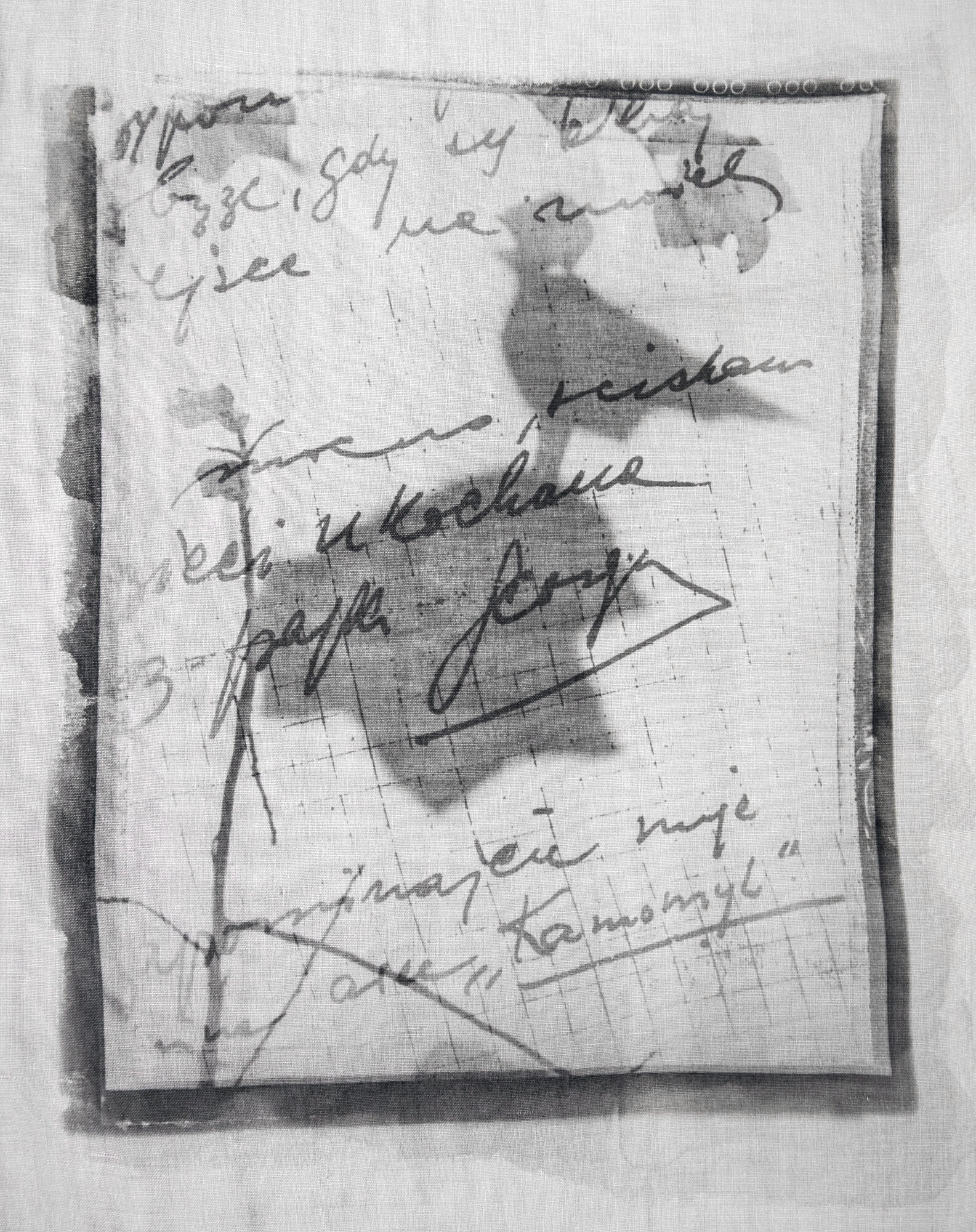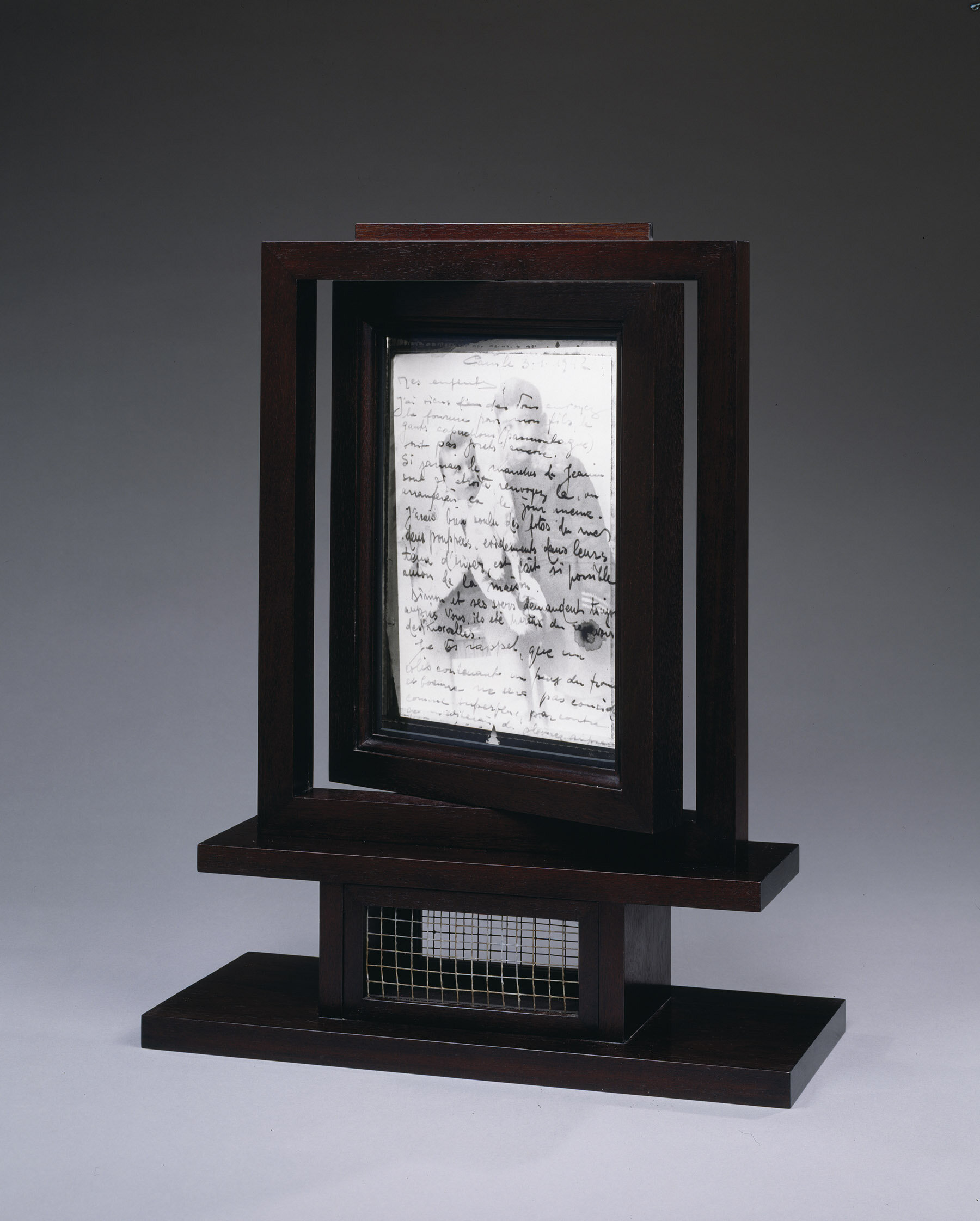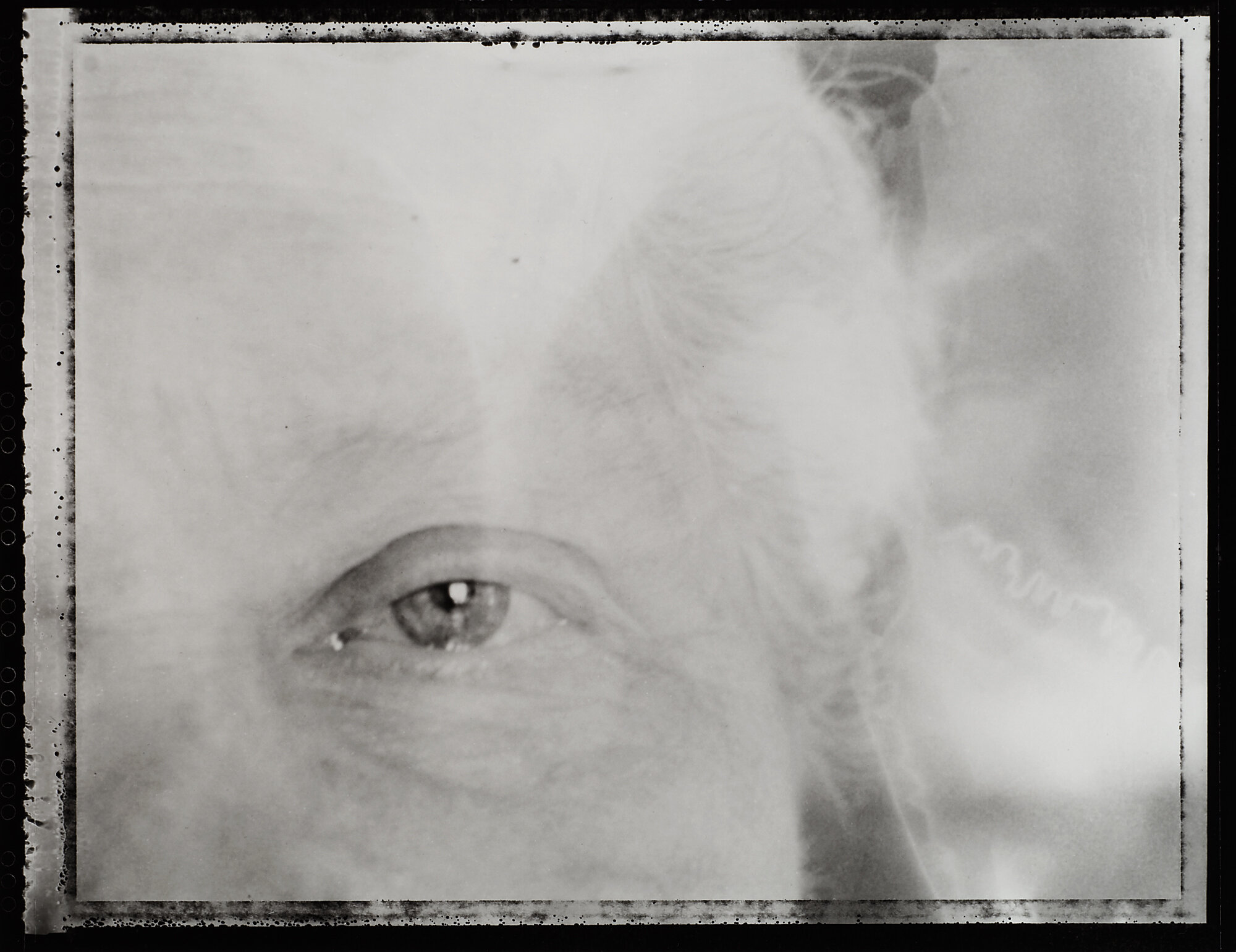RECORD: Cultural Pulses
January 22 - February 28, 2021
La Morada. RoFa Projects. Potomac. MD
Record: to repeat, reiterate, recite; rehearse, get by heart," from Old French recorder "tell, relate, repeat, recite, report, make known" and directly from Latin recordari "remember, call to mind, think over, be mindful of," from re- "restore" (see re-) + cor (genitive cordis) "heart" (as the metaphoric seat of memory, as in learn by heart).
Pulse: directly from Latin pulsus (in pulsus venarum "beating from the blood in the veins").
As if it were a record of her personal history, Muriel Hasbun takes a journey guided by the emotional pulse of her paternal Christian Palestinian and French Polish Jewish maternal family, blending it with her childhood in El Salvador. This is how, in Saints and Shadows and in Protegida and Auvergne-Toi et Moi, we see her search to make visible a family that, given cultural persecution and prejudice, was forced to become invisible.
Images built with letters, postcards, documents, and testimonies give life to many stories and give beauty to the harshness of a violent reality.
Hasbun's photographic work allows her to delve into and reconfigure her family's history, to make way not only for her multiple migrations, but also to trace the path that so many migrants have had to travel. These photographs carry the pulses of a particular time and place, which could be anyone's anywhere in the world and which, like our own heartbeats, can guide us if we pay attention to their rhythm.
Likewise, with her photographs, Hasbun opens the way to other pulses which ultimately and collectively mix with her own; that is, she immerses us in the movements of the earth itself.
In Pulse: New Cultural Registers Hasbun is fascinated by the seismographic records of El Salvador, and she records them with emotion and camera, and then merges them with the rescued cultural legacy left by Janine Janowski, her mother, and director of Galería el laberinto, an epicenter of cultural activity during the Salvadoran civil war between the 1980s and 90s.
Her work is a fusion of the historical and artistic past of a country, with the emotional vision of an artist who refuses the erasure of family memory and collective history, framed within the artistic production of generations in El Salvador.
RECORD: Cultural Pulses thus becomes a construct of her own identity, through the records of her family history and of her country of origin. The pulse of art and life is seen from Hasbun's visual, transnational, and transcultural metaphor. In her hands, photography becomes a means to evoke the drives and narratives of our realities, always subjective and learned by heart.
Gabriela Rosso
Art Works
Is it possible to trace our journey through a visual record of the land’s pulses? Can we metaphorically mark our personal and cultural legacies onto the land and in the process make it our “terruño” and diasporic homeland? Can we repair misrepresentation and erasure?
Pulse: New Cultural Registers reframes the cultural legacy of El Salvador during the 1980s and 1990s using personal and historical archives. It imprints the rescued archive of the renowned Galería el laberinto --an epicenter of cultural activity in El Salvador during its civil war, founded by my late mother Janine Janowski-- along with my own photographic archive of the time onto the national seismographic record of El Salvador. The constructed photographs transform the land into a fully lived and witnessed “thirdspace” of memory and art, mapping our history into a new meeting ground for an inclusive, equitable and restorative future.
With 2 million Salvadorans living in the United States, we are the 3rd largest Latinx population, and the largest immigrant group in the Washington, D.C. area. I invite the public to celebrate us, to get to know us, to empathize with us through the recognition of our art, culture and personal stories.
Muriel Hasbun
Saints and Shadows
I come from peoples in exile.
I became an adult with an extreme sensitivity to the irreconcilable…
Since 1990, I have committed my creative energy to developing a body of work that explores my family history and sense of identity. Santos y sombras is a refuge against silence and forgetting. The work becomes a personal diary where I mold the emotional aura surrounding my Palestinian/Salvadoran Christian and Polish/French Jewish family as I was growing up in El Salvador.
With the Todos los santos (All the Saints) images, I explore my memories of childhood as well as delve into the expression of identity of my paternal, Palestinian Christian family. Through the finding of family photos and documents, the collection of oral histories, and the re-evaluation of my own perceptions, I am slowly reconstructing a world that, with the process of assimilation and the passage of time, had become obscured.
The ¿Sólo una sombra? (Only a Shadow?) images take me into a world where silence is refuge; persecuted in France and in Poland during World War II, my maternal Jewish family had no alternative but to become invisible. Through my work, I begin to unearth the lingering echoes of those silenced voices, hoping to regenerate them, from burnt ash into glimmering light.
My photographic work, then, is a process of re-encounter, of synthesis, and of re-creation. Through it, past and present become interlaced in a renewed configuration; the Palestinian desert and Eastern European ash sift, shift and blend in the volcanic sands of El Salvador, to form the texture of the path on which I define and express my experience.
Muriel Hasbun
Protegida: Auvergne-Toi et Moi
With this series, I journey across the Atlantic Ocean into Europe’s history, in a search for clues that will help me establish correspondences between the past and the present, the distant and the near, the actual and the imagined, the personal and the public. In doing so, I discover links between peoples and places apparently disconnected. But as I examine the strangely familiar outlines of the Auvergnac volcanos on my photographic proof sheets, I realize that nothing is so easily separated; nothing, so easily forgotten; nothing, so neatly kept within its borders.
The little town of Le Mont-Dore gave refuge to my mother when she was two years old in Nazi-occupied Vichy France. Recently I treaded through its rugged landscape photographing fast-moving, opaline clouds that filtered light onto its broken horizon line. As I photographed, I carried two small, nearly indistinguishable, red rocks in my camera bag, one Auvergnac, the other Salvadoran. I wondered, and I still do, how coincidental could it be that my mother chose to settle in a land whose volcanic contour mirrored the place of her childhood refuge.
Who would have thought, after more than 50 years, that a small village in the Auvergne region would resonate to anyone outside of France’s borders? Personal histories, when unearthed and re-stated, have an uncanny echo. In our world of unprecedented migration, these echoes travel great distances. Often, they go unheard or, being distant, they become indistinguishable against the noise of the proximate. Through my work, I now hear these echoes distinctly, and being distinct, they have become insistent.
As a result of my close scrutiny of period photographs from Poland and from France, and of handwriting scribbled across
postcards bearing the Vichy stamp, scenes from another time serve as a counterpoint to images of the present. The photographs, printed on the remnants of linens belonging to my maternal grandmother, constitute a dialogue.
Muriel Hasbun
Protegida / Watched Over
Hasbun has collected the memories of wartime France retained by her great aunt and mother and connected them with her own memories of growing up in El Salvador. […]
In the installations “Hélène” and “Ave Maria,” photographs of the artist’s great aunt and a small chapel in the Auvergne are combined with excerpts from postcards written by her grandfather to her grandmother during the war. […]
Presented as altar-like triptychs, the photographs ground us in the here and now, but also require us, intellectually and emotionally, to be in two places at once. (Excerpts from Venice Biennale essay by Andy Grundberg)


